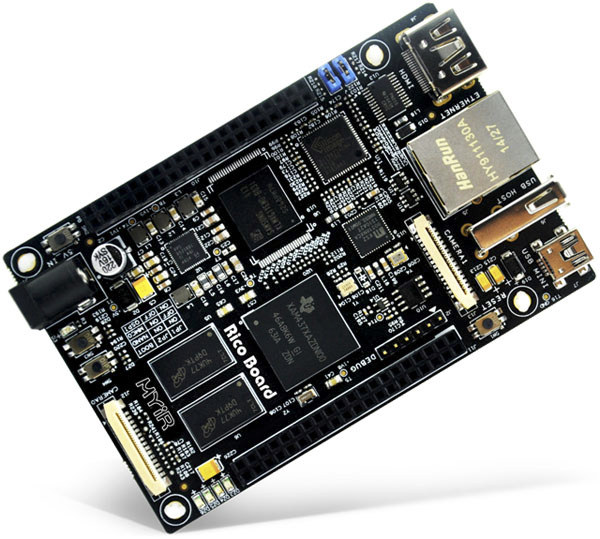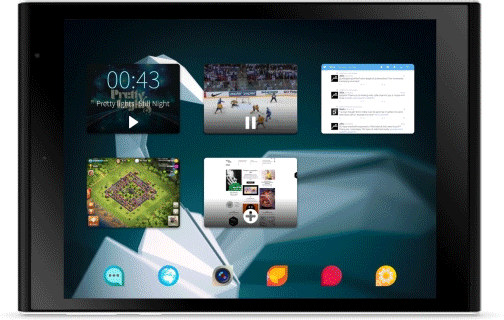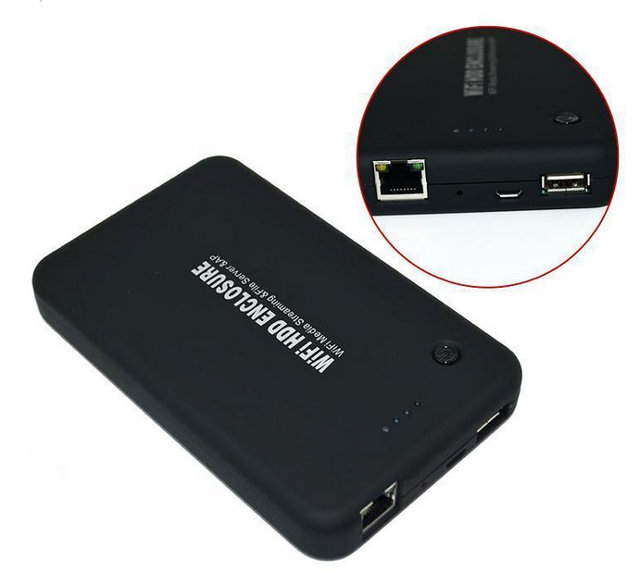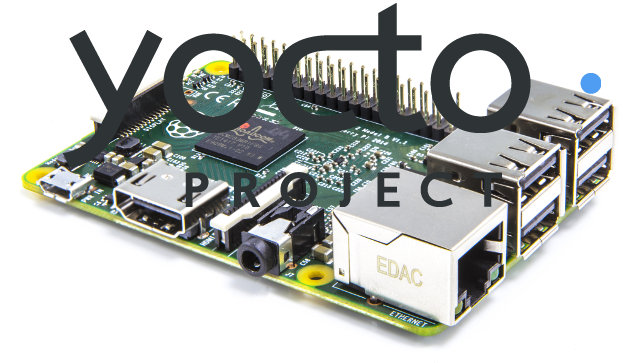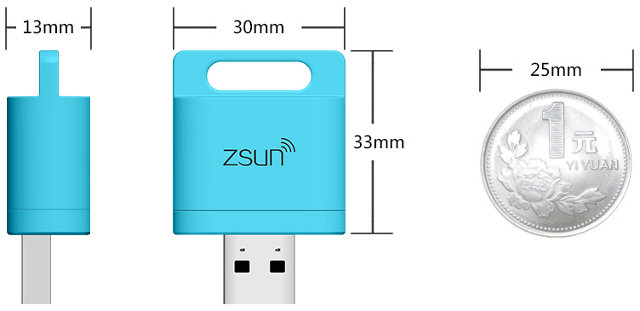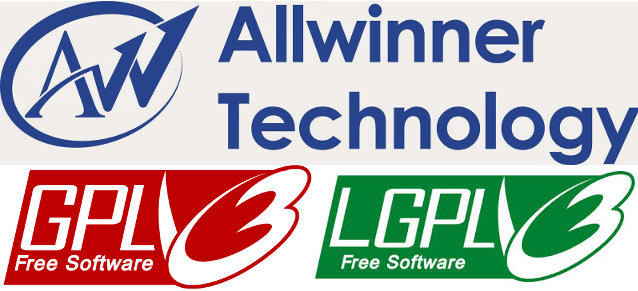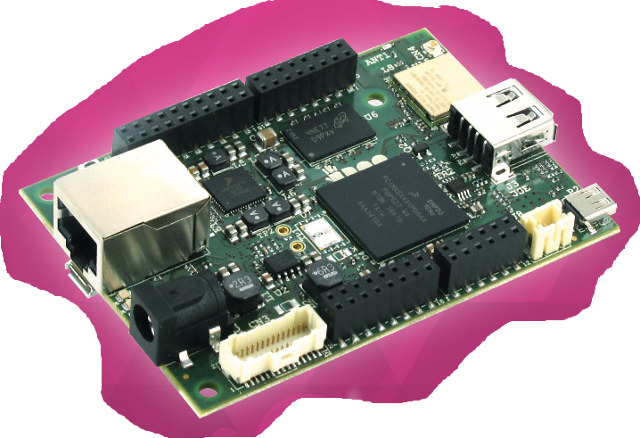Shenzhen based MYIR Tech has just launched two new single board computers with Rico board featuring Texas Instruments Sitara AM437x ARM Cortex A9 industrial processor, and Z-Turn board based on Xilinx Zynq-7010 ARM Cortex A9 + FPGA SoC. Both boards sell for $99 in single quantity. Rico Board Specifications: SoC – Texas Instruments AM4379 single core ARM Cortex A9 processor @ 1.0GHz with PowerVR SGX530 GPU, and 4x PRU @ 200 MHz. Other AM437x on request. System Memory – 512MB DDR3 (Options: 256MB or 1GB) Storage – 4GB eMMC, 256 or 512 MB NAND flash (reserved), 16MB QSPI flash, 32KB EEPROM, and micro SD slot Video Output – HDMI and LCD interfaces (LCD connector located on bottom of the board). Connectivity – 10/100/1000 Mbps Ethernet USB – 1x mini USB 2.0 device port, 1x USB 2.0 host post Camera – 2x 30-pin camera interface Debugging – 1x debug serial port, […]
Jolla Opens Sailfish OS 2.0 for Licensing, Unveils Sailfish Secure, Plans Atom x3 Support
As the Jolla Tablet running Sailfish OS 2.0 is about to ship to Kickstarter backers (Q2 2015), the company has issues a press release announcing Sailfish OS 2.0 is now ready for licensing to OEMs and other partners, and OS porting is being done to the newly announced Intel Atom x3 processors. Sailfish OS 2.0 has been designed for both smartphones and tablets with the following key changes and improvements: Stronger technical OS core and improved Android application compatibility Support for Intel architecture, including the Intel Atom x3 processor Best multitasking on the market for both smartphones and tablets Improved user experience with an enhanced, even richer user interface Strong privacy and personalization features Many new UI/UX features, like enhanced notifications and events views, and even simpler swipe access to main functions Sailfish 2.0 is designed to provide premium visibility in the UI for leading digital content providers and to […]
Add Network Connectivity to 2.5″ SATA Drives With Wi-Fi & Ethernet Enclosures
One person asked if there were solution to add Wi-Fi or Ethernet to hard drives similar to what Zsun Wifi Card Reader does with micro SD card. Provided solution include buying a low cost router with USB such as TP-Link WR703N, and the Pogoplugs which are pretty good, especially since you can install Debian or Arch Linux ARM, but are only available at low cost if you live in North America. But I’ve now been made aware of 2.5″ SATA HDD enclosures selling for around $40 that also come with Wi-Fi and Ethernet, and provide a compact way to add networking to hard drives. Specifications for the aforelinked Wi-Fi HDD Enclosure: Connectivity 802.11 a/b/g/n Wi-Fi. Modes: AP + Client; AP + WAN Bridge; AP + WAN router Ethernet 3G possible via USB port HDD – Supports up to 2TB HDD USB – 1x micro USB port for charging, 1x USB […]
Build a Raspberry Pi 2 Minimal Image with The Yocto Project
The Yocto Project is a build system that allows developers to make custom Linux distributions matching their exact needs. I’ve already shown how to build a 12MB Compressed image for the Raspberry Pi with Yocto, but the Raspberry Pi 2 has recently been added to the project, so I’ve tried to build it too in a machine running Ubuntu 14.04. I’ll use poky since it’s the default, but you could also build the system for Angstrom or without distributions (OpenEmbedded Core only). The steps to get the code is just the same as for the Raspberry Pi:
|
1 2 3 4 5 |
mkdir yocto cd yocto git clone git://git.yoctoproject.org/poky.git cd poky git clone git://git.yoctoproject.org/meta-raspberrypi |
You just need to checkout master, and not any branch (like dizzy) since R-Pi 2 is not yet supported in any release. Initialize some environment variables and the build directory:
|
1 |
. oe-init-build-env build |
Now edit conf/local.conf with vim or nano to set the machine to raspberrypi2 instead of qemux86:
|
1 2 |
MACHINE ??= "raspberrypi2" GPU_MEM = "16" |
There are more Raspberry […]
Zsun Wifi Card Reader Adds up to 64GB to Your Smartphone
I’ve previously covered Zsun SD11x USB flash drives with 8 to 128 GB internal flash, a battery, and Wi-Fi connectivity in order to easily add storage to devices without micro SD slots. The company has now launched a new Wi-Fi card reader to do the same, but with your own micro SD card instead allowing up to 64GB extra storage, and easy replacement. Zsun card reader specifications: SoC – Qualcomm Atheros AR9331 WiSoC System Memory – 256 Mbit RAM (32 MB) Storage – Internal flash for firmware (capacity TBD), micro SD slot up to 64GB Connectivity – 802.11 b/g/n Wi-Fi @ 150 Mbps USB – 1x USB 2.0 port for power and use as standard USB card reader Dimensions – 33 x 30 x 13 mm There’s no battery, so you’d have to connect the dongle to a power bank, PC, car charger etc.. to power it. If you connect […]
Allwinner’s New Media Codec Library (CedarX) May Infringe on Open Source Licenses and Copyrights
Allwinner has had to good idea to open allwinner-zh github account last September in order to release source code, binary libraries, and documentation for these ARM processors. Yesterday, the company released a new version of their closed source CedarX library used to decode and encode video streams. But Luc Verhaegen (libv), known for his reverse-engineering work on ARM Mali-400 (lima driver) and now Mali-Txxx GPU (Tamil driver), analyzed the binary and claimed the library is not compliant with LGPL licenses, and may also infringe on On2 copyrights. Luc wrote his concerns on sunxi-linux mailing list, and Allwinner promised to look into it. Two libraries are involved: ffmpeg which includes both LGPL and GPL licenses, but the contention seems to be about the LGPL part, since only optional features are GPL’ed in ffmpeg. It’s perfectly fine to include LGPL libraries into your binaries, as long as you don’t modify the open source […]
GroBotz Interactive Robot Project is Made of Easy to Assemble Smart Blocks (Crowdfunding)
GroBotz makes me think of Lego applied to robotics. The project consists of modules such as motors, sensors, buttons, switches, or cameras that snap together in order to create a robot on wheels, games, toys, a musical instrument, or whatever idea you may have, and the hardware is then programmed using a graphical user interface. A Raspberry Pi board is used for the brain of the robot, and Microchip PIC MCUs for the smart blocks. The software is programmed in C# using Xamarin, the user interface is based on Unity, OpenCV is used for image processing, and during development a plastic part where printed with Makerbot, and schematics and PCB layout designed with CadSoft EAGLE. The company has now come up with a number of modules as shown in the picture below. Your robot can then be controlled over Wi-Fi with GroBotz app which works on Windows, Mac OS, iOs, […]
UDOO Neo Development Board is Powered by Freescale i.MX 6SoloX Processor
UDOO boards combine a Freescale i.MX6 dual or quad core processor with an external Atmel SAM3X MCU that’s programmable as an Arduino board, so as Freescale has now formally announced their i.MX 6SoloX processor with a Cortex A9 core running Linux and Android, and a Cortex M4 core running MQX real-time operating systems, it was logical that the company would soon launch a low cost development board based on this heterogeneous processor. Meet UDOO Neo. UDOO Neo board specifications: SoC – Freescale i.MX 6SoloX ARM Cortex-A9 core @ 1GHz and ARM Cortex-M4 Core with 2D/3D GPU System Memory – 512MB or 1GB DDR3 (only Plus version) Storage – On-board NOR SPI Flash, micro SD slot, 8-bit SDIO interface (on headers) Video Input/Output micro HDMI port LVDS interface + touch (I2C signals) Analog camera connection supporting NTSC and PAL 8-bit Parallel camera interface (on headers) Audio – HDMI USB – 1x […]


